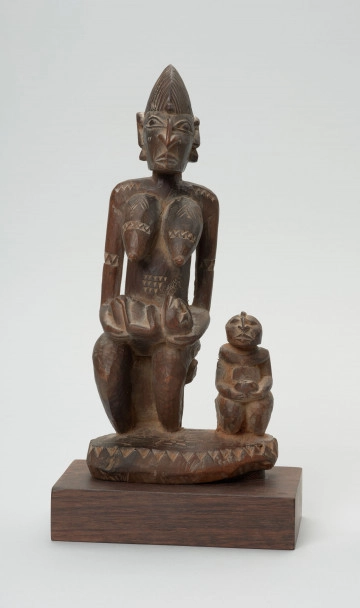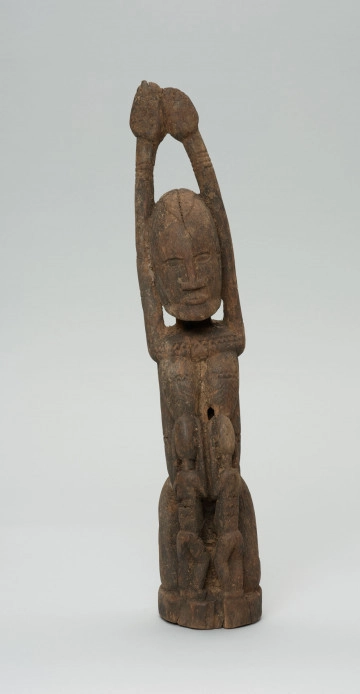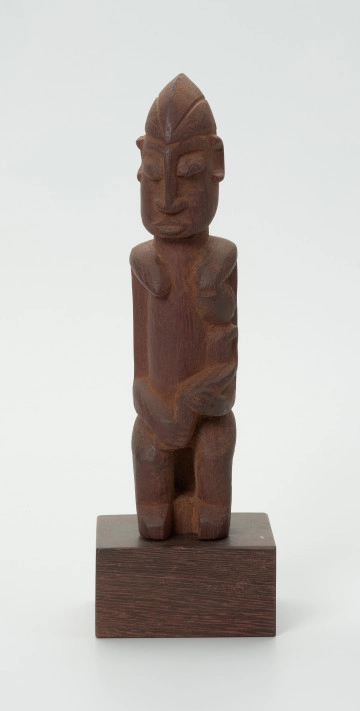
Figure - woman with child
między 1951 — 2000
National Museum in Szczecin
Part of the collection: Collection of Dogonian art
Dogon art abounds in depictions of women with children. They symbolically refer to maternal love and female fertility, which are highly valued in Africa.The Dogon know that conception is the result of sexual relations between a man and a woman. Such contacts are only forbidden when the woman is menstruating. For the Dogon, this is very important, and they clearly distinguish between non-menstruating women, calling them ayane, and those in menstruation - yapune. Menstrual blood is unclean and threatens not only family but also community altars. Dogon women during that period are isolated. They stay in special houses called punulu (sometimes also yapunuli, yapunulu ginu) built on a circular plan. Depending on the region, the isolation can last from three to six days. Then the woman returns to her husband's homestead. If a husband wants to be sure of the paternity of his children, he must have intercourse with his wife immediately after she returns from punulu. The absence of menstruation in a woman of childbearing age is proof of her blessed state for the Dogon. If no effects are seen, i.e. the woman's belly does not grow, they believe that the child is sleeping at the express wish of the god Amma.Husband and wife live in separate rooms, or in the case of polygynous marriages, when the husband has more than one wife, each of them lives separately. In the evening, the wife visits her husband's room (dembere), and intercourse occurs there. According to mythological assumptions, during sexual intercourse the man sows. The Dogon believe that he is like Nommo, the water god who makes the falling rain fertilise the earth. That is how the agricultural activity and the conjugal act merge into one.
Ewa Prądzyńska
Author / creator
Dimensions
cały obiekt: height: 32 cm, width: 6 cm
Object type
figure
Creation time / dating
Creation / finding place
Identification number
Location / status

między 1951 — 2000
National Museum in Szczecin

między 1951 — 2000
National Museum in Szczecin

między 1951 — 2000
National Museum in Szczecin
DISCOVER this TOPIC
National Museum in Lublin
DISCOVER this PATH
Educational path